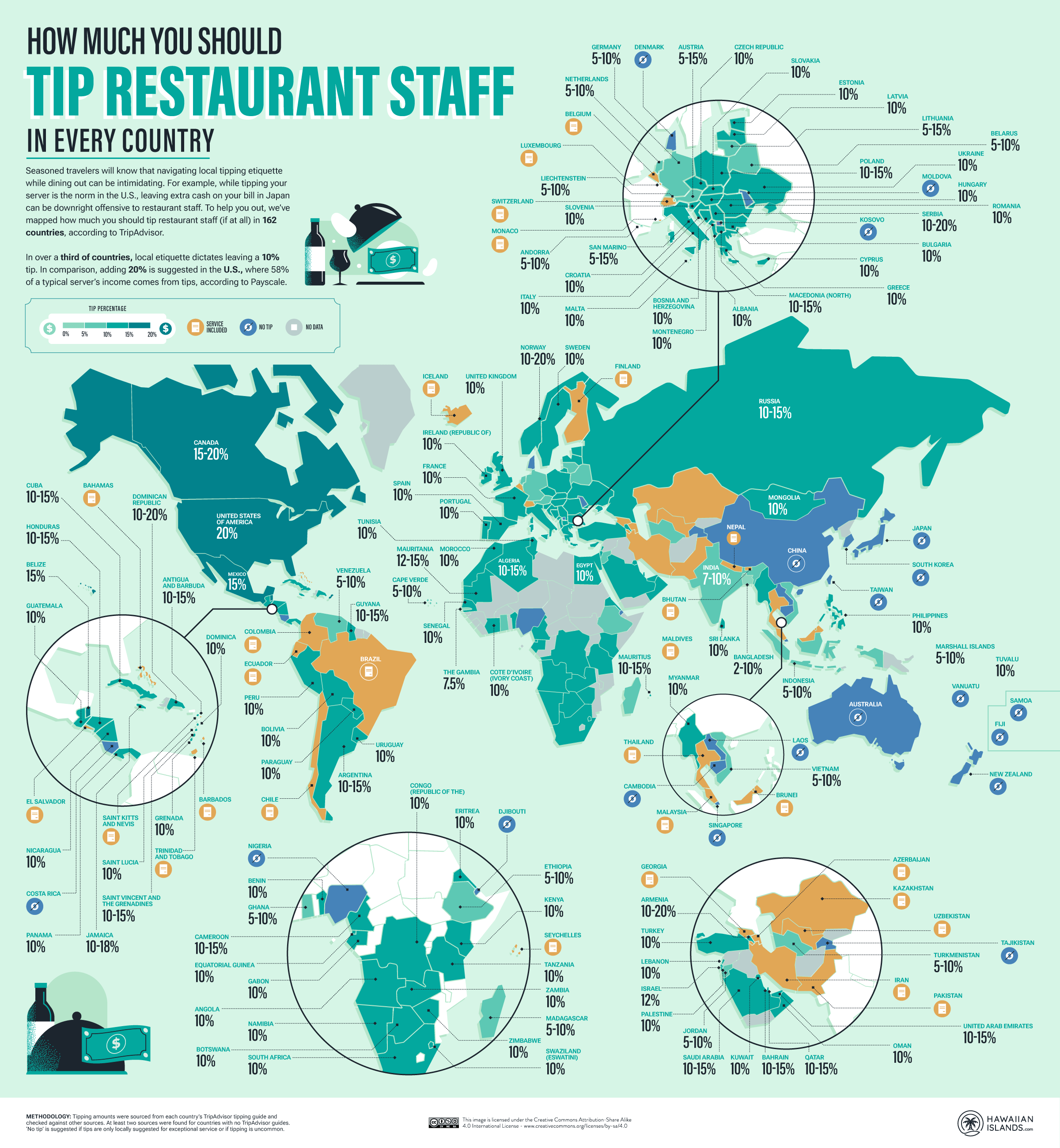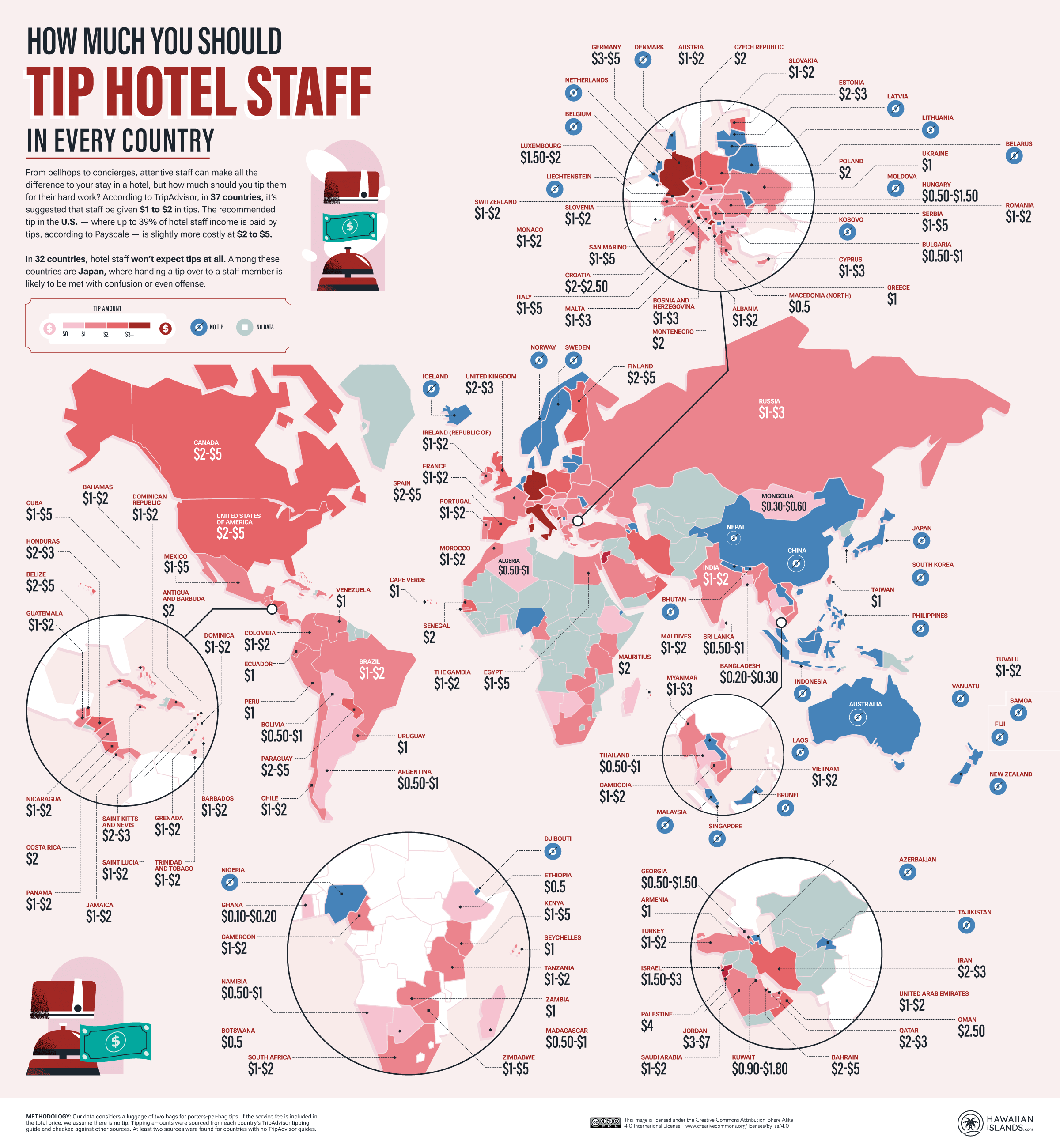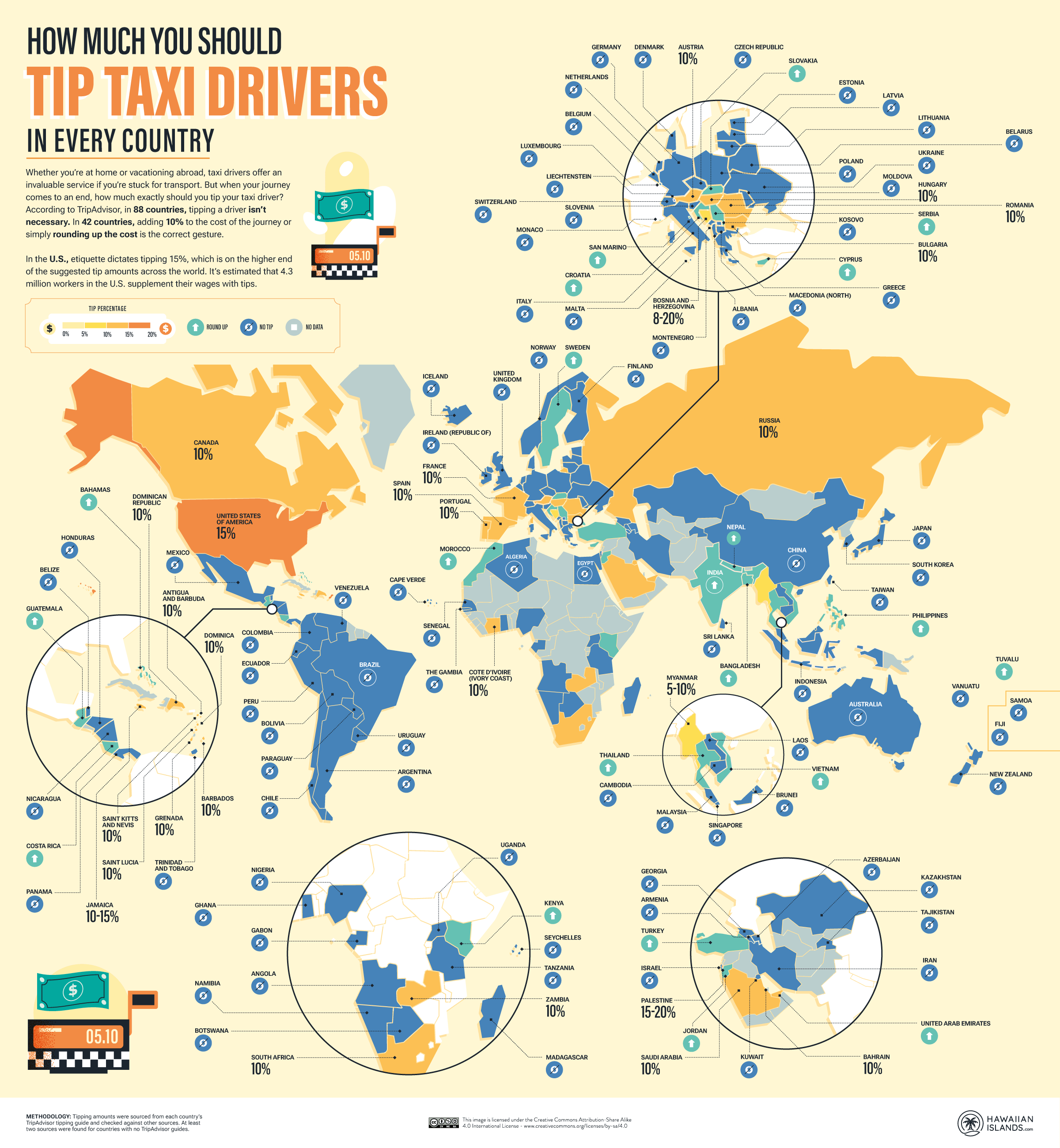When traveling abroad, it can be difficult for tourists to navigate local customs and etiquette in an unfamiliar culture. This can be especially true when it comes to tipping — while a 20 percent addition to the bill is common practice in the United States, this practice could be considered over the top or even offensive, depending on the venue.
Hospitality platform Hawaiian Islands broke down cultural differences in tipping etiquette in a detailed study published on its website. The infographics cover practices across 162 countries and illustrates exactly how varied tipping can be across various regions.
As the report highlights, there are three common venues where visitors typically tip: restaurants, lodging, and transportation. The written report highlights several interesting points from the study, while the three individual maps on the Hawaiian Islands website provide a rough dollar amount or percentage expected while tipping.
Perhaps one of the most varied attitudes on gratuity concerns restaurant visits.
In 66 countries, a 10 percent tip should cover restaurant dining. In many regions (especially in Europe), this tip isn’t expected on every bill as service fees are often factored into the guest’s total bill. In other locations — such as Serbia, Armenia, and Canada — guests typically leave no more than 20 percent, while in the United States gratuity usually starts at 20 percent of the bill.
When it comes to transportation, 88 percent of countries don’t add tips to a taxi fare. Others might round up the fare or tip 10 percent of the total. While staying at hotels or other lodgings, 141 countries consider it polite to tip a bellhop or porter. A $1 or $2 tip suffices in 37 countries for hotel staff, while travelers in other locales offer at least 50 cents.
Curious how much to budget while tipping on a trip abroad? Check out the map below:



